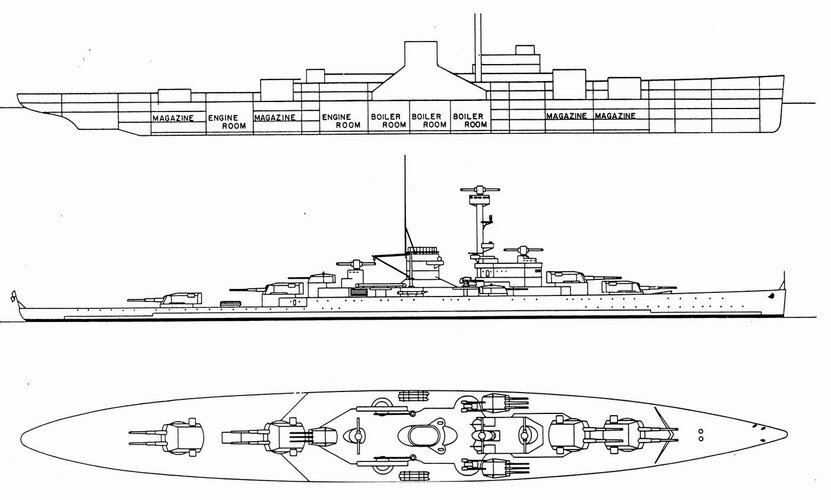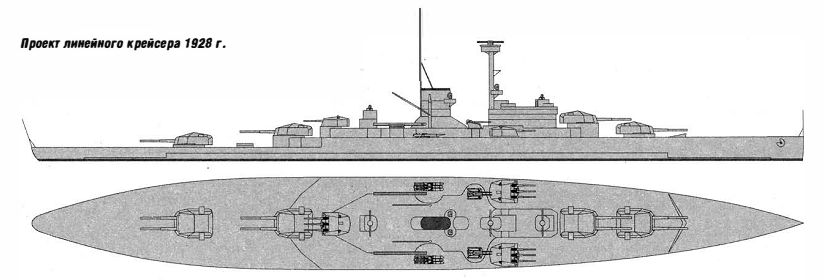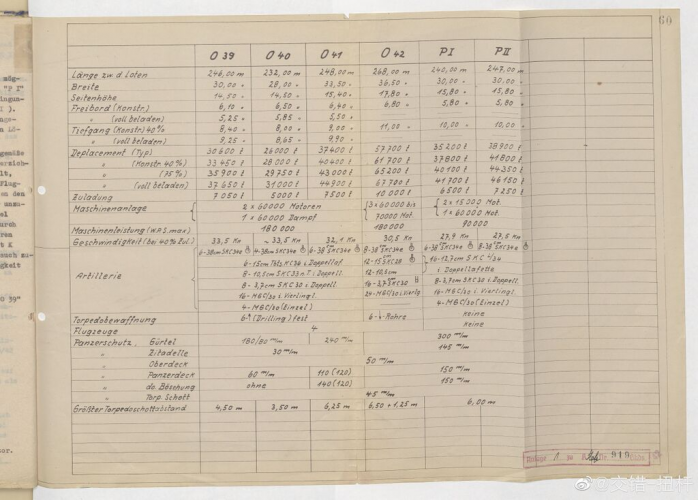Here at this link there are 6 drawings, including the one I posted earlier:Спасибо. Как мне искать в Bundesarchive?
You are using an out of date browser. It may not display this or other websites correctly.
You should upgrade or use an alternative browser.
You should upgrade or use an alternative browser.
Kriegsmarine - KM Ship Plans/Discussion
- Thread starter _Sarcasticat_
- Start date
gasperazzoparis1997
ACCESS: Restricted
- Joined
- 12 May 2021
- Messages
- 4
- Reaction score
- 0
Thank you very much!!!!Here at this link there are 6 drawings, including the one I posted earlier:
Не за что. Пользуйтесь на Здоровье!Thank you very much!!!!
My pleasure. Use it to your health!
gasperazzoparis1997
ACCESS: Restricted
- Joined
- 12 May 2021
- Messages
- 4
- Reaction score
- 0
Hello again. Is there a website with the general arrangements of the Regia Marina ships?
00-PureEvil-00
ACCESS: Restricted
- Joined
- 5 September 2021
- Messages
- 43
- Reaction score
- 63
Hello again. Is there a website with the general arrangements of the Regia Marina ships?
Try regiamarina.net, they do have many photos, but about schemes, I'm not so sure.
goofygoober20000
ACCESS: Restricted
- Joined
- 12 October 2024
- Messages
- 11
- Reaction score
- 16
Is this true that H-44 would have been faster than H-43?
Is this true that H-44 would have been faster than H-43?
I don't think so. They had exactly the same machinery.
Breyer writes (pg 316 of the English translation of "Battleships and Battlecruisers: 1905-1970) that H-43 would have been good for 31 knots, and H-44 would have been good for 30.1.
Of course, this is all estimation, since these were little more than design studies. Your actual mileage may very.
DRW
- Joined
- 11 March 2006
- Messages
- 8,624
- Reaction score
- 3,792
From the recently published new edition of the "Gröner" (Die deutschen Kriegsschiffe 1815-1945, volume 1), probably one of the most reliable sources, as based on original sources only

... and as already mentioned, it's stated here again, that those designs were never meant to be realised, but just were studies, mainly for examining, how the increasing weight of aerial bombs would lead to bigger ships, if the deck armour would have been increased accordingly.

... and as already mentioned, it's stated here again, that those designs were never meant to be realised, but just were studies, mainly for examining, how the increasing weight of aerial bombs would lead to bigger ships, if the deck armour would have been increased accordingly.
_Sarcasticat_
Die Katze.
- Joined
- 16 April 2020
- Messages
- 364
- Reaction score
- 351
Unfortunately no.Does anybody have any blueprint of 150mm FLAK 50, FLAK 55, FLAK 60 or FLAK 60F?
Is this true that H-44 would have been faster than H-43?
H-43 and H-44 carried over the same machinery as H-42. However, 31 (H-43) and 30.1 knots (H-44) are overload. The actual is 30.7 and 29.8 knots. Using diesel only would yield a maximum of 23 and 22.5 knots respectively.I don't think so. They had exactly the same machinery.
Breyer writes (pg 316 of the English translation of "Battleships and Battlecruisers: 1905-1970) that H-43 would have been good for 31 knots, and H-44 would have been good for 30.1.
Of course, this is all estimation, since these were little more than design studies. Your actual mileage may very.
DRW
Just as in the armament, though, machinery is not much of a concern and the primary purpose is in their armor and torpedo defense. Still, their speed is rather impressive for their size.
Last edited:
goofygoober20000
ACCESS: Restricted
- Joined
- 12 October 2024
- Messages
- 11
- Reaction score
- 16
- Joined
- 6 September 2006
- Messages
- 4,832
- Reaction score
- 9,440
This thread is getting quite long and jumbled which makes it harder for people to find stuff. So following discussions with the mod team I'll be splitting out the WW1 (and pre-1914) posts and possibly the armaments too into their own dedicated threads over the next few days.
_Sarcasticat_
Die Katze.
- Joined
- 16 April 2020
- Messages
- 364
- Reaction score
- 351
Alright, so be it.
- Joined
- 6 September 2006
- Messages
- 4,832
- Reaction score
- 9,440
I have now more or less finished the splitting/copying posts. Nothing has been deleted, just moved.
KM Naval Armament Plans and Discussion
Kaiserliche Marine Ships Plans and Discussion
Link to _Sarcasticat_ file store on this topic:
 drive.google.com
drive.google.com
I bundled the what-if works in: KM What-if Ships
KM Naval Armament Plans and Discussion
Kaiserliche Marine Ships Plans and Discussion
Link to _Sarcasticat_ file store on this topic:
Germany - Google Drive
 drive.google.com
drive.google.com
I bundled the what-if works in: KM What-if Ships
Last edited:
00-PureEvil-00
ACCESS: Restricted
- Joined
- 5 September 2021
- Messages
- 43
- Reaction score
- 63
@_Sarcasticat_ Just saw you've edited the first post of this thread... Could you, please, bring back the link to your Google Disc, the one with German blueprints and documents? It was deleted from the first post, and there were lots of interesting things there...
goofygoober20000
ACCESS: Restricted
- Joined
- 12 October 2024
- Messages
- 11
- Reaction score
- 16
goofygoober20000
ACCESS: Restricted
- Joined
- 12 October 2024
- Messages
- 11
- Reaction score
- 16
Seems to be, but my question is how were they supposed to place those twenty 127mm? They definitely would put 5 or 6 next to the bridge but what about the rest?
goofygoober20000
ACCESS: Restricted
- Joined
- 12 October 2024
- Messages
- 11
- Reaction score
- 16
I think it could have been a SK C/34 (the only 127mm in kriegsmarine) or a completely different design
MrMemerMan
ACCESS: Restricted
- Joined
- 11 June 2020
- Messages
- 47
- Reaction score
- 41
Is there anymore information about this?Very interesting...View attachment 758364
Force Lord
ACCESS: Restricted
- Joined
- 13 December 2020
- Messages
- 17
- Reaction score
- 12
Unfortunately no. At least, not published. If there's anything in the Kriegsmarine archives it's probably not yet digitized in Invenio.Is there anymore information about this?
MrMemerMan
ACCESS: Restricted
- Joined
- 11 June 2020
- Messages
- 47
- Reaction score
- 41
I'm gonna take a wild guess and say armor wise, it probably was similar to the A-III C variant, or anything of the A series.Unfortunately no. At least, not published. If there's anything in the Kriegsmarine archives it's probably not yet digitized in Invenio.
Force Lord
ACCESS: Restricted
- Joined
- 13 December 2020
- Messages
- 17
- Reaction score
- 12
Whitley actually mentions that the German aircraft cruisers had variants that were pure carriers, however he gives no outlines of these versions.I'm gonna take a wild guess and say armor wise, it probably was similar to the A-III C variant, or anything of the A series.
MrMemerMan
ACCESS: Restricted
- Joined
- 11 June 2020
- Messages
- 47
- Reaction score
- 41
Only time will tell.Whitley actually mentions that the German aircraft cruisers had variants that were pure carriers, however he gives no outlines of these versions.
YourChair
ACCESS: Confidential
- Joined
- 24 October 2021
- Messages
- 83
- Reaction score
- 138
The passage outright calls them "DP guns", so assumedly the author is not referring to the standard C/34 guns in SP mountings.I think it could have been a SK C/34 (the only 127mm in kriegsmarine) or a completely different design
Of course, this doesn't narrow it down at all: this could be the LM/41 twin mounting for the DDs (although that one is only 52 degrees max elevation -- perhaps a different version would reach 70 degrees, as I recall the single mount did?)
It could also be the KM 40 (128/61), or the "12.7cm Doppelflak" whose documents are is in the weaponry folder.
(The fact they are called "127mm" in the passage is probably just a designation quirk, the same as British 113mm guns being called "114mm", and German 149mm guns being called "150mm".)
- Joined
- 9 October 2009
- Messages
- 21,944
- Reaction score
- 13,576
So they were looking at what was effectively (in some respects at least) a Battlecarrier design though the alternate interpretation of it being a German equivalent to the Midway-class has merit as well, along with a 'Flight-deck cruiser' design, both for use in a post-war period following what was still then seen as a inevitable Axis victory.Very interesting...
YourChair
ACCESS: Confidential
- Joined
- 24 October 2021
- Messages
- 83
- Reaction score
- 138
Magiaconatus
ACCESS: Restricted
- Joined
- 23 October 2022
- Messages
- 9
- Reaction score
- 6
I don't think there is for H39. Either lost or buried somewhere in some container at BAMA.Seeing as so much incorrect information was spread about the armor scheme of the Scharnhorsts, do we have any (verified) plans or drawings of the armor of the Bismarck class and the H class?
It seems odd that the Bismarck armor scheme would look so different from the Scharnhorst scheme.
View attachment 760526
View attachment 760527
There is a similar one to your Scharnhorst on Tirpitz, but that's probably "as planned", and not an "as fitted" plan.
Bismarck horizontal armour deck over the forward magazine wasn't 100 mm but 95 mm, or the main mast upper lookout wasn't 60 mm, but 55 mm by the time they finished construction. And who knows what else more was different.
JJMM
ACCESS: Restricted
- Joined
- 26 February 2025
- Messages
- 22
- Reaction score
- 85
De Grasse cruiser was one of my ship during year 1971 in Pacific "tour" for nuclear tests.
Some drawings made on different step... in french sorry !
Some drawings made on different step... in french sorry !
Attachments
-
 Croiseur De Grasse 1971 & dessus.png188.3 KB · Views: 92
Croiseur De Grasse 1971 & dessus.png188.3 KB · Views: 92 -
 Croiseur De Grasse 1962 & dessus.png193.7 KB · Views: 72
Croiseur De Grasse 1962 & dessus.png193.7 KB · Views: 72 -
 Croiseur De Grasse 1959 & dessus.png193.9 KB · Views: 86
Croiseur De Grasse 1959 & dessus.png193.9 KB · Views: 86 -
 Croiseur De Grasse PA & avions.png200.6 KB · Views: 88
Croiseur De Grasse PA & avions.png200.6 KB · Views: 88 -
 Croiseur De Grasse PA & dessus.png124.7 KB · Views: 92
Croiseur De Grasse PA & dessus.png124.7 KB · Views: 92 -
 Croiseur De Grasse origine.png205.5 KB · Views: 92
Croiseur De Grasse origine.png205.5 KB · Views: 92 -
 Croiseur De Grasse prévu et réalisé 3 vues.png200 KB · Views: 116
Croiseur De Grasse prévu et réalisé 3 vues.png200 KB · Views: 116
Last edited:
goofygoober20000
ACCESS: Restricted
- Joined
- 12 October 2024
- Messages
- 11
- Reaction score
- 16
Old stuffs, you can find them on previous pages, beside O-39 (the original O-class) the rest are modified variants to fit some committee requirements while PI and PII are brand new designs (fully diesel powered machinery instead mixed, no torpedoes, no floatplane hangars and first German large warships to have unified DP guns).Information about O-39 and beyond (not the best quality but it still works)
ptdockyard
"Pick out the biggest and commence firing"
- Joined
- 19 January 2014
- Messages
- 134
- Reaction score
- 193
Old stuff for some but not all of us. Are there any drawings or sketches of the PI and PII?Old stuffs, you can find them on previous pages, beside O-39 (the original O-class) the rest are modified variants to fit some committee requirements while PI and PII are brand new designs (fully diesel powered machinery instead mixed, no torpedoes, no floatplane hangars and first German large warships to have unified DP guns).
- Joined
- 16 December 2010
- Messages
- 3,798
- Reaction score
- 4,188
Very interesting...View attachment 758364
Very very interesting. Has any information survived on the wargames themselves? What scenarios were being studied can provide interesting historical insights, the classic example (slight derail) being the 1905 wargame carried out by the British General Staff into what could be done to oppose a German invasion of Belgium in the event of a Franco-German war. The results of that fed directly into the establishment of the Entante and British planning for cross channel transport in the event of war. A discussion of this game in the context of the value of war planning can be found at the link below.
- Joined
- 16 December 2010
- Messages
- 3,798
- Reaction score
- 4,188
Will this be added to the rotation for Deviant Arts?So... the German Midway?
goofygoober20000
ACCESS: Restricted
- Joined
- 12 October 2024
- Messages
- 11
- Reaction score
- 16
I'm looking into it, I have backups if need be. Give me a couple hoursDid the Google driver (This one) with blueprints of armaments and ships and other stuff got deleted? I can't seem to access it all
_Sarcasticat_
Die Katze.
- Joined
- 16 April 2020
- Messages
- 364
- Reaction score
- 351
Currently pulled for re-organization at the moment. Some new plans came in, but the current organization is a bit of a mess.I'm looking into it, I have backups if need be. Give me a couple hours
Similar threads
-
Kriegsmarine - KM Naval Armament Plans/Discussion
- Started by _Sarcasticat_
- Replies: 293
-
I-400 sized German U-boat projects from WW2?
- Started by Vahe Demirjian
- Replies: 9
-
-
-







